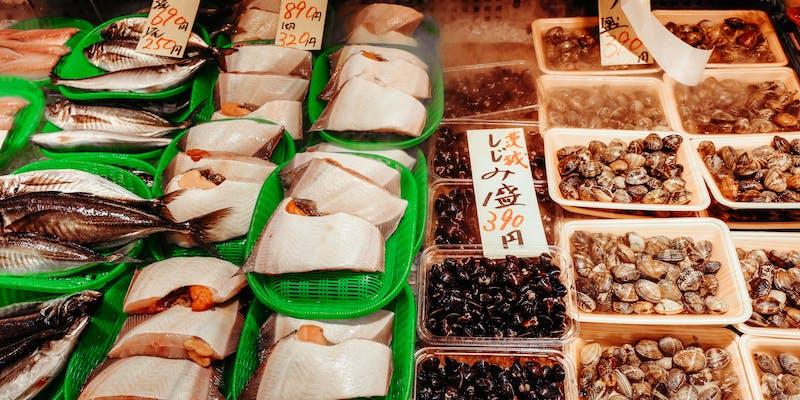Choosing Low-Potassium Meat and Fish: A Healthy Diet Guide
Feb 23, 2024 By Madison Evans
The implementation of a low-potassium diet can contribute to improving cardiovascular health. Blood pressure and heart rate are significantly affected by potassium. Adequate consumption of low potassium foods will prevent the onset of hypertension and cardiovascular disease. The American Heart Association prescribes a daily potassium intake of 4500 mg or more in adults. Potassium has the task of regulating the blood pressure and the cardiac rhythm. One can decrease the intake of foods high in potassium to lower the chance of developing hypotension and heart disease.
Similarly, according to ODS, potassium is a mineral found in various food products. It improves electrical conductivity throughout the body and is essential for muscle function. In addition, potassium regulates body fluids. As indicated by an extra study, there was a link between diets lacking potassium and a higher risk of fluid retention. The preservation of nutrient balance is key to maintaining good health, and potassium deficit can only lead to a surge in the risk for some major diseases.
Why Should Potassium Intake Be Reduced?
Common mechanisms by which the body regulates potassium levels include consuming low potassium foods eliminating excess potassium via urine. On the contrary, individuals with kidney function impairments surpassing two-thirds regularly encounter urinary potassium excretion difficulties. The condition in which these individuals produce an excessive amount of potassium in their blood is known as "hyperkalemia" ("hyper" = "high," "kal" = potassium, "emia" = in the blood). In addition to aiding in treating hyperkalemia, a potassium-restricted diet can reduce its induction risk.
The potassium content is ascertained through the withdrawal of a minuscule volume of blood from a vein. 3.8 to 5 mEq/L of potassium is regarded as within the normal range. Excessive levels of either six mEq/L or three mEq/L from the recommended range are considered hazardous. Strict regulation of blood potassium levels is necessary to prevent adverse complications.
Generally, symptoms are not detectable at extremely high concentrations of hyperkalemia. Patients whose ECG levels surpass six mEq/L commonly experience alterations in electrocardiogram features and a widespread sensation of malaise. At this juncture, severe muscular weakness, paralysis, an irregular cardiac rhythm, or unanticipated death are undesirable complications that may occur.
Potassium Meats
Rare are low-potassium substitutes for poultry, turkey, and other ubiquitous meats. Chicken wings contain the least amount in this category, at 206 milligrams per 100 grams (approximately 3.5 ounces). Each chicken wing weighs approximately one ounce. One hundred grams equals a portion consisting of three to four wings. Weighting approximately 104 grams, 100 grams of chicken drumsticks are composed of 239 milligrams of potassium. As previously stated, this food item does not meet the criteria for a potassium deficiency. In general, chicken and turkey harbor a lower potassium content when compared to beef, lamb, and pork. These animal meats are not categorized as low potassium meats despite their potassium content surpassing 200 milligrams.
Low Potassium Fish And Seafood

The majority of fish and seafood contain a considerable quantity of potassium. However, it should be noted that low-potassium alternatives do not exclusively consist of chicken and other commonly consumed meats. Clam meal, weighing 100 grams, is potassium-deficient at 58 milligrams. A 100-gram (3.5-ounce) portion of shrimp contains 101 milligrams of potassium, among the low potassium meats content of any meat.
Light tuna canned contains 175 milligrams of potassium per 100 grams. Verify that you are consuming tuna in cans by consulting the labels, as many contain unwholesome additives, including phosphorus. There are 193 milligrams of potassium in a single serving of oysters. Potassium deficiency is an additional characteristic. Fishes and crustaceans are listed below with the potassium content of various low potassium fish and shellfish. Potassium (mg) in 100g serving:
- Asparagus 448
- Anchovies 544;
- Trout 356
- Catfish has 382
- 58 for clams
- The crab has 319
- Crustacea 294
- Eel 291
- Haddock 362
- Herring 413
- At least 247 for lobsters
- Material 436
- Mussels have 573.
- Over 200 ocean perch
- Opus 626
- 193 for oysters
- Well has 340
- Route 328
- Salmon 391
- Marine Bass—324
- 253 scallops
- Squid has 441
- 528 for Swordfish
- Shrimp 382
- Lightly canned tuna 176
- Fresh tuna 557
Precautions To Take
Correctly rehydrating, A potassium-rich diet includes fruits, vegetables, and dairy products. Practical alternatives involve adhering to a modified low-potassium diet, supplementing with potassium, and consistently monitoring blood pressure and cardiac health.
As a result, before initiating low potassium foods, it is vital to have a thorough understanding of the potential risks involved. Further inspection is warranted of the following points: Firstly, monitor your potassium intake.
Monitor Potassium Intake
The basic step is to monitor your potassium absorption. More important is that individuals on a low potassium diet and undergoing treatment for a medical condition, such as hypertension, will be affected. The intake of a low-potassium diet will cause muscle atrophy as a strategic adaptation mechanism to get the needed nutrients the body requires. Due to that, a significant amount of muscle mass can suffer from atrophy, and its strength may decrease.
Stop Restricting Calories
Cautiousness is warranted when adhering to a low-potassium diet regarding cadmium restriction. Potentially detrimental consequences that may ensue include malnutrition and weight loss.
Avoid Salty Foods
Another thing to remember when following a low-potassium diet is to avoid high-sodium foods. This is because salt can help to offset the effects of a low-potassium diet. However, your body will pump out more salt on a low-potassium diet. Dehydration and other health problems can result from this.
Cooking Tips For Low-Potassium Diet

Leaching can deplete potassium in some vegetables. Cook fresh or cold veggies in water after two hours. Saturated foods leach potassium. Here are other kitchen rules:
- Peel potatoes, carrots, beets, and rutabagas before cutting—clean chopped vegetables with warm water.
- In lukewarm, unsalted water, fry the vegetables for three hours or overnight.
- Add herbs, pepper, and seasonings to your food. Prohibit potassium-based salt replacements.
How Much Potassium Is Necessary?
Experts recommend 4700 mg of potassium per day [2]. Medium to severe chronic renal disease, characterized by a glomerular filtration rate (GFR) below 45 mL/min (compared to 100 to 120 mL/min), should not exceed 3000 mg of potassium per day [3]. Laboratory results and clinical judgment should decide future limits. A "low potassium diet" restricts potassium intake to 2,000–3000 mg.







